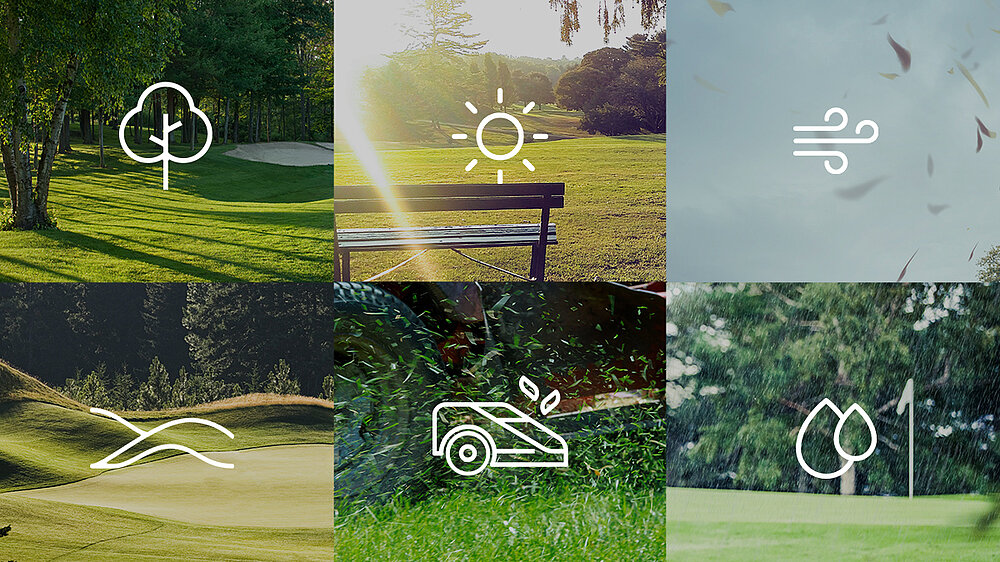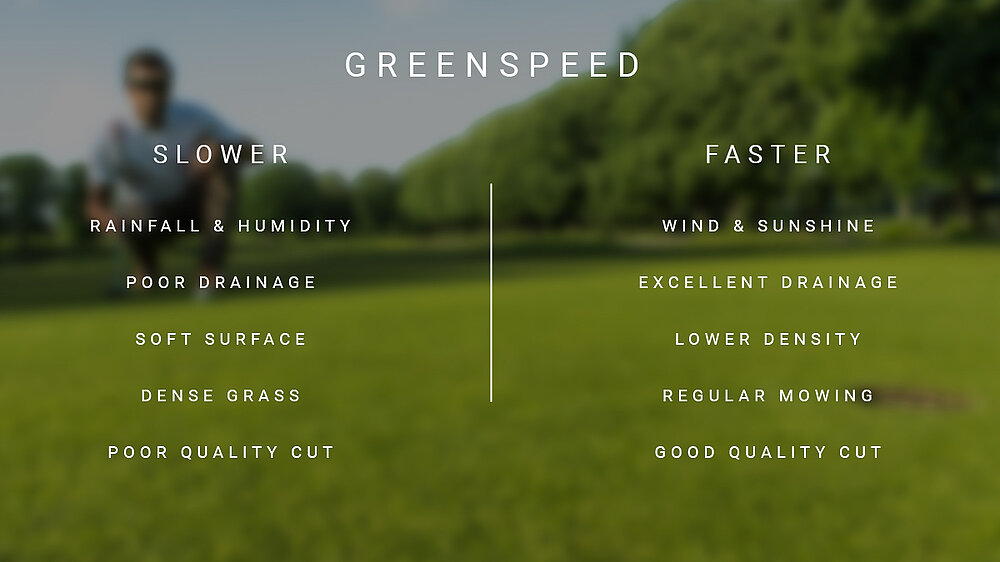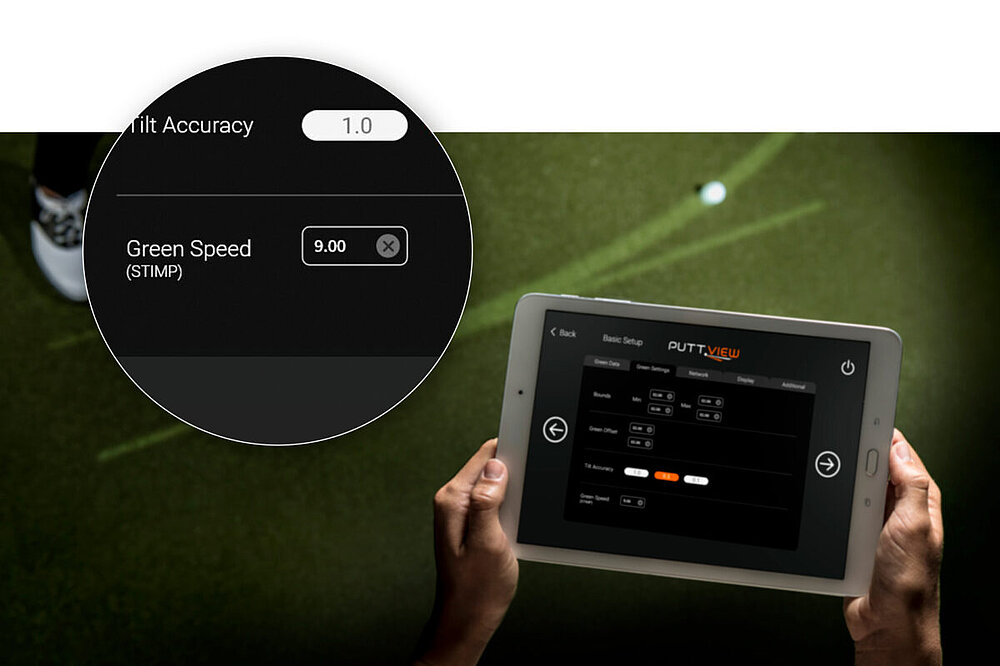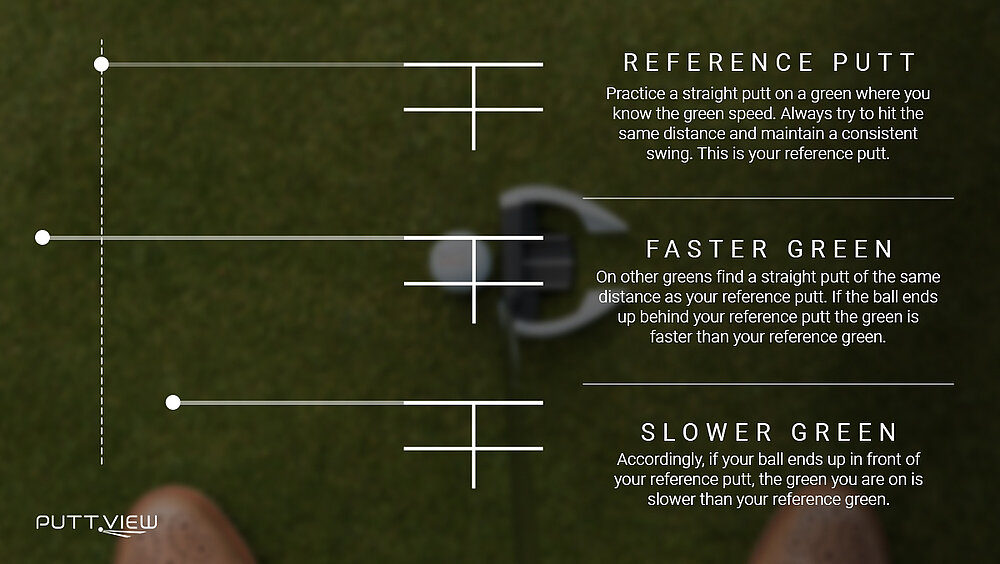The need for speed

Someone who doesn’t play golf will never understand the struggles on the green. They might see a complex movement when they look at a golf swing and will at least get an idea of how difficult it is to hit that tiny little ball far and straight. But once you are on the green it is not visible to them what the problem might be. Even as a golfer it is sometimes hard to grasp. You might be able to see a break between your ball and the hole and you can practice getting your ball started on the right line, however, that still doesn’t mean the ball will be going into the hole. And it all comes down to perhaps the hardest part of golf: judging the speed of a green.
Seeing a break and estimating how much movement there will be on the ball is a thing of practice. You can train your eye, your judgment, and through experience, you will inevitably get better. However, the speed of the green is not visible and changes not only daily but also throughout the course of a day. Yet, once you get to the golf course you often don’t even have a stimpmeter measurement at hand that could give you an idea of how fast or slow the greens on a specific course are. You have no indication of what you are going to have to deal with. But before we get into how you can practice your speed and distance control, let’s have a look at the factors that determine the speed of a green and why fast greens are not always the best idea.

Influencing green speed factors
There are many factors that can determine the speed of the green. Some, like the weather, are not controllable but others, such as aerification or the frequency of mowing, are factors that can be influenced. In general, fast greens are obtained by shorter, more frequent cuts, dry conditions, low friction on the greens, and dense, compound ground conditions. Maintaining those conditions can come at high costs. Not only financially, but also for the entire course. While prepping greens for higher speed, you also put high stress on the greens. Therefore, making them more vulnerable to diseases, bugs and other damage and increasing inconsistency on the golf course, meaning the speed changes from green to green increase.

For many golfers, the dream come true in terms of greens and green speed is the home of the Masters. You might have heard of courses having a sub-ground airflow and drainage system installed and of course Augusta National has a very sophisticated system. It enables them to manage the speed of the greens as they please, meaning they can slow down or speed up their greens to almost any level they want.
But be aware that the green speeds you see on TV every April, are not the speeds that you will see all through the year. Believe it or not, this is something not even Augusta National can do. While they are known for their strive for perfection, there is another reason why it is important for a course like this to have such a system in place.
The course is surrounded by trees and the immense undulation makes it even more difficult to maintain the same green speed on every green. Why? Well, for one the trees limit the airflow and circulation. By the way, is also part of the reason why you often hear about those swirling winds during the broadcast. Limited airflow and circulation mean moisture, softer and slower greens and if the roots of big trees start to grow underneath the green, they can disrupt the flow of nutrients.
The undulation also plays an important role, as the moisture typically gathers at the bottom of a hill. This means that the superintendent has to treat greens very differently depending on their location on the course. Greens on top and or greens that are not surrounded by trees will dry out faster, while greens with more moisture will be slower and growth is harder to maintain.
The sub-ground system at Augusta National significantly helps in maintaining the same green speed for every green, as it helps control the amount of moisture. Again, we are talking about near perfection here and this level of greenkeeping is unattainable for almost every golf course for the sole reason of the amount of money it requires. But even if they were to be able to pull things of financially, the harm and damage you do to the greens by keeping them super-fast for a long time, is not something you should thrive for.

Another influencing factor on green speed is obviously the grass type your greens have. Take for example Fescue grass. This, or a combination with Bentgrass, is typically seen in speedy greens and therefore a preferred grass type for many golfers. The needle-like rolled leaves of fescue grass are of low maintenance and because the growth density is not as tight as in other grasses and its slow overall growth, it is primed for high speed.
You might ask yourself now why not all courses have Fescue grass? The reason is that most greens are simply not dry enough for it. The grass thrives in dry conditions ruling it out for many courses. Those often have Poa grass in combination with browntop Bent on their greens. It grows easier and even in moist areas with little air circulation but also requires higher maintenance. Poa has a folded boat-shaped leave which creates more friction on the ball than for example Fescue does, making the greens generally slower. Whichever grass type or a combination thereof your course has, has a significant impact on the green speed they can and want to obtain. Therefore, it is important to understand the different requirements for each type and for golfers to take away the right learnings in regard to the speed of the green.
So here is the deal. It is possible to calculate any putt on any given putting green. There doesn’t have to be any guessing whatsoever. The only problem is that this data is not visible to you. Pros for example have green books available for them during tournaments and you will be able to see just how valuable they are to them by looking at the Masters. Green books are not available at Augusta National and you will see pros struggle with break and speed because this is data, that is usually given to them. But let’s get back to the average Joe and what you can do in order to upgrade your putting because chances are, there are no green books for your home course. The biggest challenge on real greens is the determination of break and speed and how are you supposed to practice something that simply isn’t visible?

Now, that you have learned to read the surrounding signs of a green and are able to identify if a green is generally slower or faster, we will have a look at how you can use this information for more speed control while putting. The average green speed in the United States is 9 stimpmeter and for most courses, the green speed varies between 8.7 and 9.3 stimpmeter throughout the course. Meaning, if someone tells you before your round that the course runs at 9 stimpmeter, you will have some greens that run at 9.3 and others at 8.7. This is something many golfers are unaware of. They underestimate just how hard it is to maintain a consistent speed over 18 holes. And as mentioned above, the faster the greens, the higher the fluctuation of speed between the greens will be.
A study by American researchers Thomas Nikolai, Douglas Karcher, and Ron Calhoun of the year 2001 showed, however, that the average golfer is unable to detect green speed changes of below 6 inches. This is the reason why you very rarely feel like the green speed changed during your round, when in fact it does. You simply adjust intuitively to it. But what good does it do to know the stimpmeter reading or being able to understand if you have a slow or a fast green based on the surrounding factors if you have no idea what to do with this information?
Most golfers are not able to tell how big their putting stroke must be on a 9 stimpmeter green in order to get the ball to the hole. It is a hit-and-hope philosophy, and you adjust your stroke based on the feedback you get from the green. If all else fails, you just tell yourself you didn’t feel it that day. But this is about to change for you.

The only thing you need to increase your ability to control the speed is a reference putt and a stimpmeter value. If you own a PuttView system, you already know the calibrated stimpmeter. But do you also know how much green speed influences the break you need to play? In the video below Mike Kanski has simulated with the help of PuttView how break changes when the speed of the green changes. Meaning the faster the greens the more break you need to account for.
If you don’t own a PuttView System and don’t know the stimpmeter of your putting mat, you can ask your course superintendent about the green speed on the practice green for that day. Now you can choose a straight putt and start hitting balls from there. While doing this make sure you know the distance to the hole and really focus on your putting stroke and how far back you take the putter.
Once you have chosen a straight putt and a distance to the hole don’t change it again. Remember, this is your reference putt, and you should make sure to be able to replicate this putt even when you are sleeping. Make sure that every time you return to the putting green where you calibrated your baseline you make a couple of those putts but be aware that if you practice outside, the conditions can change from day to day and through the year. Therefore, it is recommended to set your reference putt indoors with a tool like PuttView as the speed will always remain the same.
After you have successfully established a reference putt, you can start to apply this drill to other courses. Upon your arrival at a new course, you should head to the putting green and choose the same distance as you chose for your reference putt. If you cannot find a straight putt to a specific hole location, you can also choose to putt to the fringe. Now it is time to replicate your putting stroke.
The immediate feedback you will get is that either your putt is too short, meaning the green is slower than your greens at home, it is too long, so the green is faster, or you have the same conditions as at your home course and therefore you don’t need to make any adjustments. This drill is a wonderful way to calibrate your putting and it gives you something that will help you adjust to different green conditions faster.
Just like the speed of a putt can influence the amount of break you will have to account for, the speed of a green will influence break as well. Intuitively you might think the faster the green the less break you need to play but it is vice versa. The faster a green gets the slower you need to hit your putt, which means that it is more susceptible to break.
In the video below Mike Kanski has simulated with the help of PuttView how break changes when the speed of the green changes. While PuttView is calibrated at a certain green speed, you can change the stimpmeter value manually and PuttView will recalculate the putts accordingly. Obviously you cannot play the putts shown in the video as the green speed has not changed, but you will be able to see how big of an influence green speed has on break. So feel free to try it out if you have a PuttView System or watch the video below.
As we have mentioned above faster greens are not always something you should strive for. A lot of people see perfect green conditions on TV week in and week out but they fail to understand that no golf course in this world is able to maintain this throughout the year. Is it nice to see those pure rolls and quick greens that even the pros struggle with sometimes? Sure, but to be honest most amateurs wouldn’t enjoy those types of greens at all.
No golfer would ever want three or four putts per green as an average and if you are unable to get the ball to stop on the green it definitely won’t add to the pleasure of a round. Additionally, researchers have found that one foot on the stimpmeter will add about 15 min to a round, making it even more undesirable to generally increase green speed and leaving it to the major events such as the club championship.
Instead, the average golfer should start to focus on how they can better manage green speed and changes in it, by finding their reference putt. Because if you are able to adapt your putting stroke, you won’t have to worry so much about whether the green is too fast or too slow for you and can start enjoying your round of golf even more.